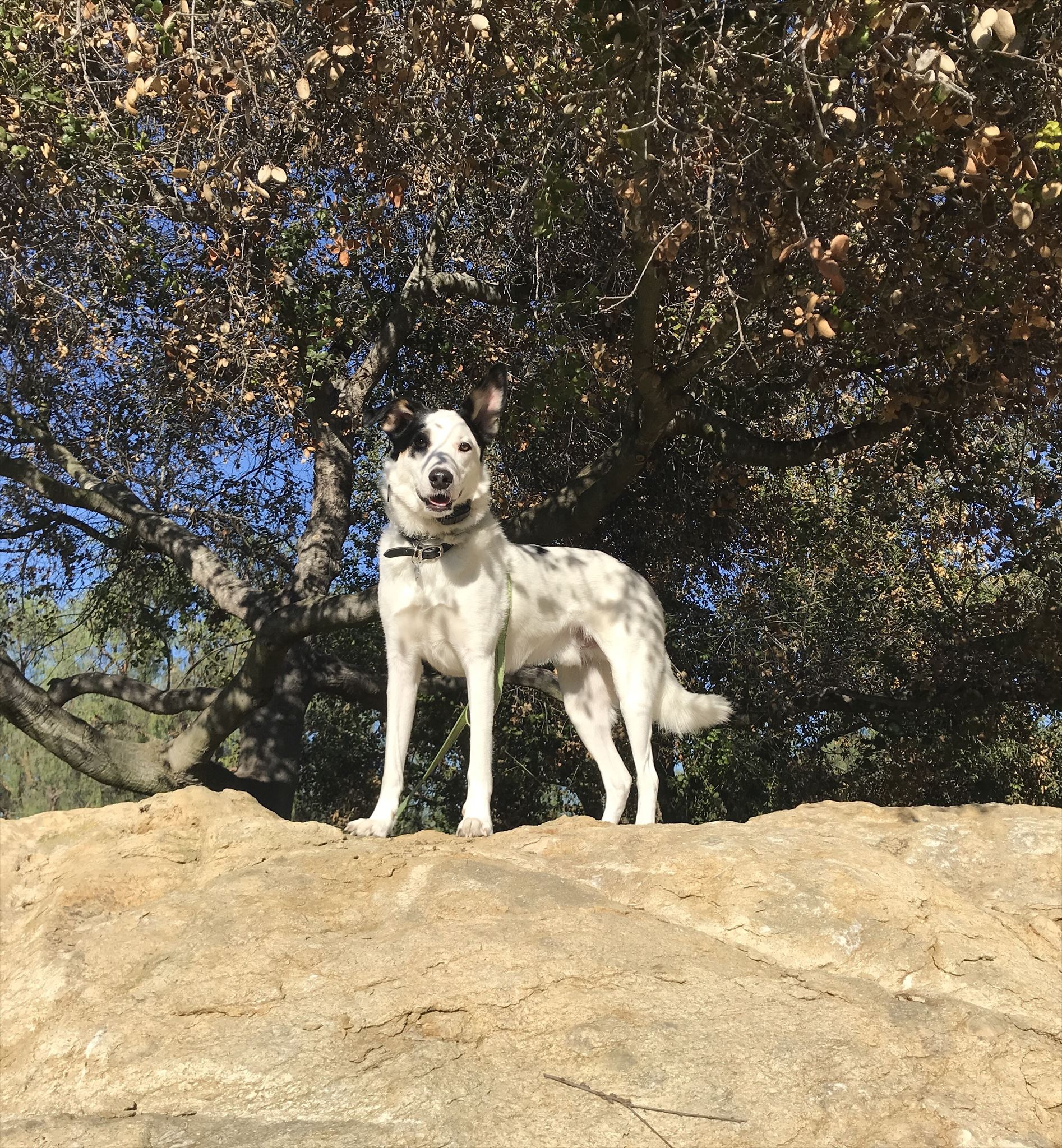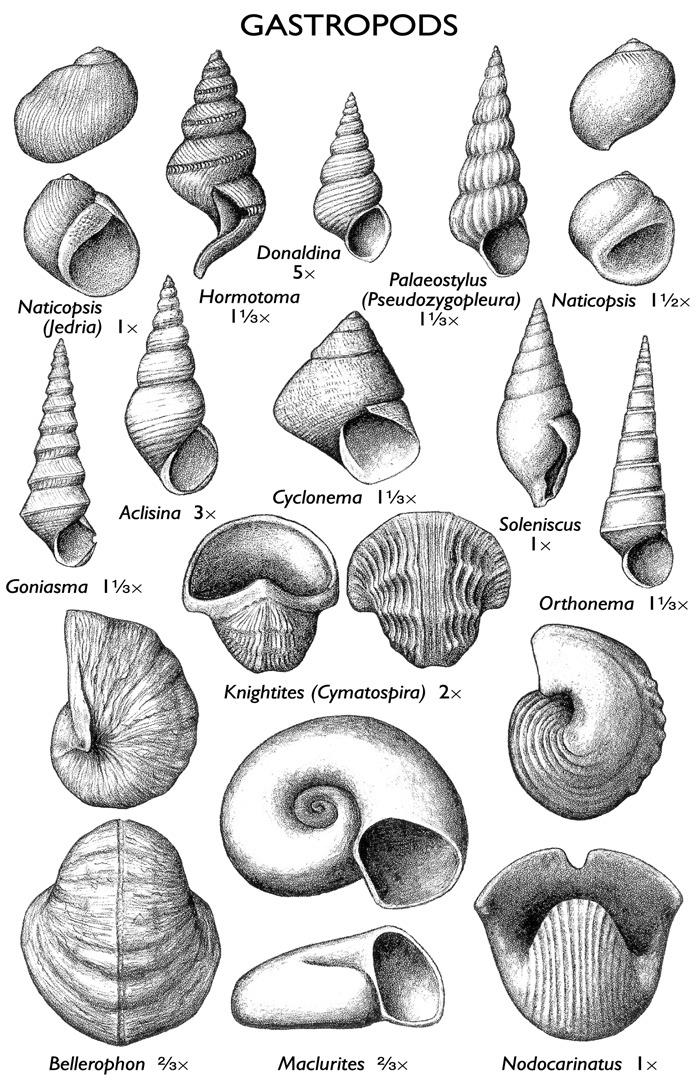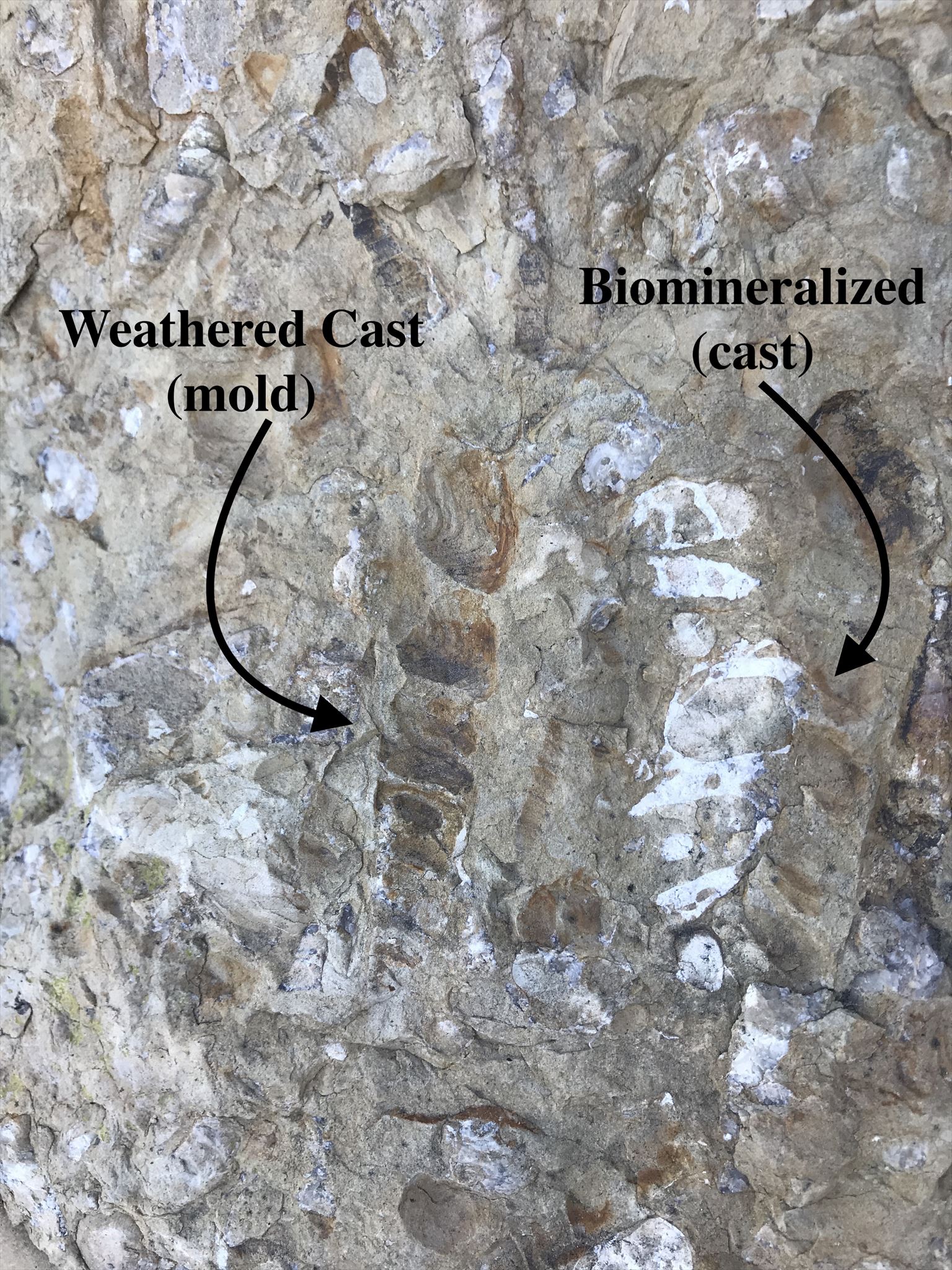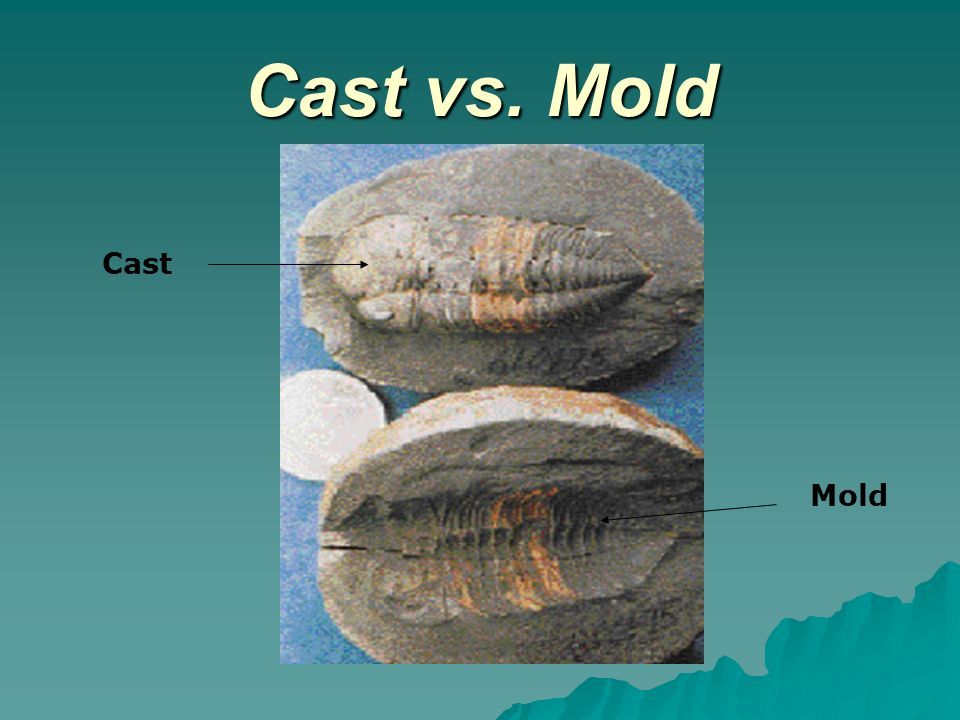
While geocaching in the area, I couldn't help but notice these unique rocks along the trail. Above, you can see the geopup ontop of one of these large rocks. These rocks are commonly known as limestone which form in a shallow marine sea environment, typically of the modern-day coastal areas of Southern California. Limestone is made up of calcium carbonate which is a direct result of marine shell sea life. Overtime, as more and more shells fall to the ocean floor, the weight of the layers above compress the layers below and harden into limestone. This limestone is extremely fossiliferous and contains a nice example of gastropod fossils.
Gastropods are a type of sea snail which thrived in this area during the Miocene epoch roughly 23 to 5 million years ago. Based on the orientation of these gastropods within these rocks, it appears they are in random oreintations, which could indicate a mass extinction event or some other rapid environmental change. Below is a chart of the different types of gastropods. Be sure to bring this chart with out as you will be asked to identify the specific types of gastropods here.

What is really special about these fossils is that they are biomineralized. Biomineralization, as it is better known as, is the process of one mineral being replaced by another within a fossil. For example, calcium carbonate, better known as calcite (CaCO3), can biomineralize into dolomite (CaMg(CO3)2) if the conditions are right. These conditions include water alkalinity, salinity, and if certain elements are in solution in the sea water. For example, if there are magnisum ions in the water, then there is a high likelihood the minerals will biomineralize into dolomite (if the conditions favor dolomite rather than calcite).
Also, aragonite (which is a polymorph of calcite), can biomineralize into calcite. A polymorph are two different minerals with the same repeating chemical fomula, but with different atomic structures and bonds. Aragonite is metastable meaning it needs a little extra energy (heat and time) from the envrionment to be able to change into stable calcite. This will allow for the atoms to rearrange themselves and form calcite. Calcite, aragonite, and dolomite all look the same to the naked eye. There is one easy way to tell the difference in the feild. It will not be required for this earthcache, but feel free to do your own test if you want to! Bonus points if you do. If you take diluted HCl (hydrochloric acid) and drip a few drops on the mineral in question and it fizzes easily (meaning there are bubbles as the calcium carbonate dispolves and releases carbon dioxide into the atompshere), then you have calcite or aragonite. If there is barely any fizzing or no fizz at all, then you got dolomite. Aragonite is a bit harder to tell the differnce and requires more knoledge about the host rock to determine. Because it contains the same chemical formula, it would behave exactly like calicte. For the purposes of this earthcache, assume your two choices are calcite and dolomite, but also keep aragonite in the back of your mind.

In the photo above (taken by myself at GZ), you can see two fossils of the same species. The one on the right has been biomineralized (white regions) while some of the original structure of the fossil (grey regions) remians. This fossil is partially biomineralized in which minerals have been replaced in the cavities of the organism, creating what is called a cast. The fossil on the left was biomineralized as well, but it has since eroded away leaving a mold (or impression) in the rock. One way to tell the difference between a mold and a cast is the way the fossils is represented. If the fossil is an imprint, meaning it is going into the rock, then it would be considered a mold. Likewise, if the fossil is bulging out of the rock then it would be considered a cast.

Biomineralization can sometimes make the fossil more susceptible to weathering as calcite, dolomite, and aragonite are relativley soft minerals as compared to the overall limestone. For reference, dolomite, aragonite, and calcite all appear to be a translucent milky white mineral that sparkles in the sunlight. In perfect conditions, they may have different habits (or shapes). However, under less than perfect conditions it becomes increasingly difficult to tell for sure the exact difference between these three minerals in the feild.
Works Cited
https://maps.conservation.ca.gov/cgs/gmc/
https://isgs.illinois.edu/outreach/geology-resources/gastropods
https://en.wikipedia.org/wiki/Biomineralization
https://en.wikipedia.org/wiki/Dolomite_(mineral)
https://en.wikipedia.org/wiki/Calcite
https://en.wikipedia.org/wiki/Aragonite
https://slideplayer.com/slide/10888053/
TO LOG A FIND ON THIS CACHE YOU MUST ANSWER ALL THE QUESTIONS BELOW. YOU CAN CONTACT ME THROUGH MY EMAIL OR THE GEOCACHING MESSAGE CENTER TO SEND YOUR ANSWERS. ANY INCORRECT ANSWERS MAY RESULT IN A CLARIFICATION RESPONSE FROM ME.
1. Sand Canyon Fossils & Biomineralization on the first line of your email AND list all geocaching names of your party so I can match your answers to them. If you all want to learn something, I would prefer each cacher send me individual emails in the spirt of earthcaching.
2. Take a close up photo of your favorite fossil using some sort of scale. Geologist sometimes use coins, books, or even humans! Be creative in what you choose for your scale. Note: this is not a selfie, but rather a documentation of the geology using a scale. This photo MUST be attached to your "found it" log. Please do not send any photos through the message center as Groundspeak compresses images.
3. (a) How many limestone boulders are in this general area? (b) How many of those contain fossils?
4. Describe the gastropod fossils. Are these mostly casts or molds? Give a description of their relative sizes, abundances, colors, shapes, and visable/textural features as well as their relative orientation(s) within the limestone (i.e. are you seeing mostly cross sections [length wise] or just the top parts? [width wise])
5. Based on your answer in number 4 (above), use the gastropod chart in this cache page to identify the specific type of gastropod that is most abundant here.
6. Out of the three types of minerals that were discussed in this cache page that can biomineralize, which one do you think is most abundant here? Can you tell? Why or why not? Explain your answer.